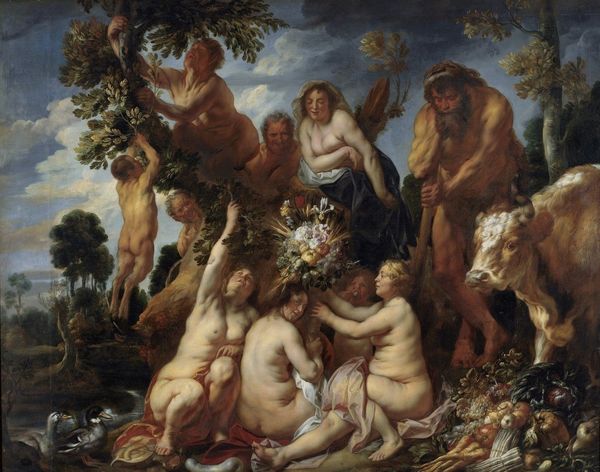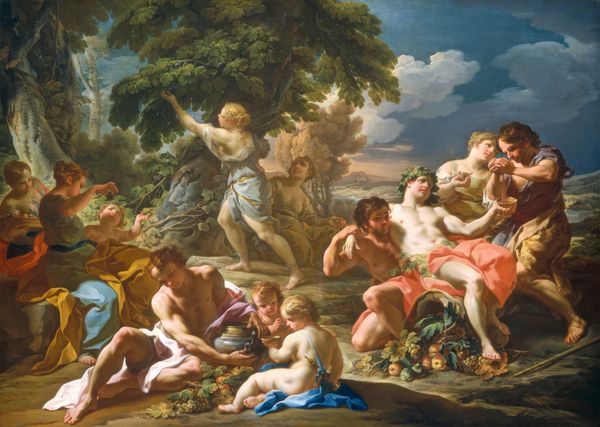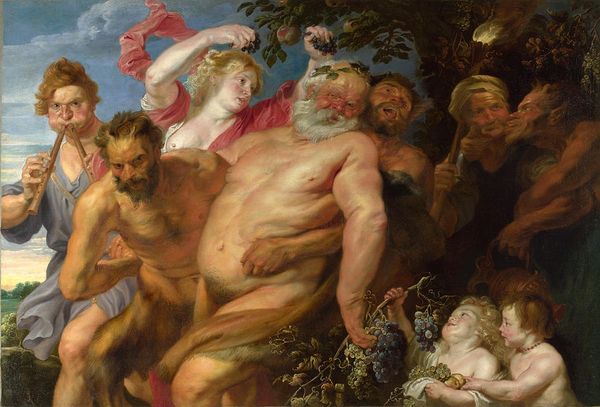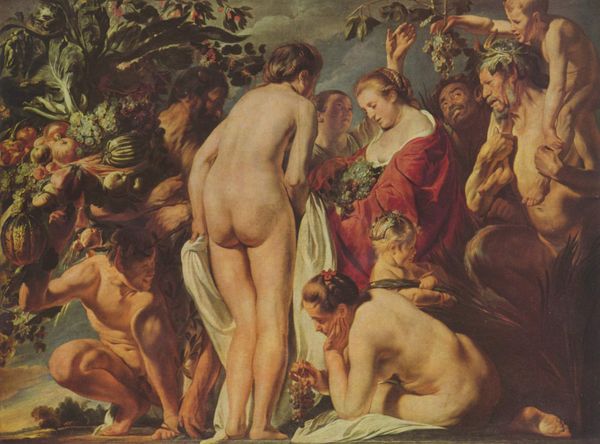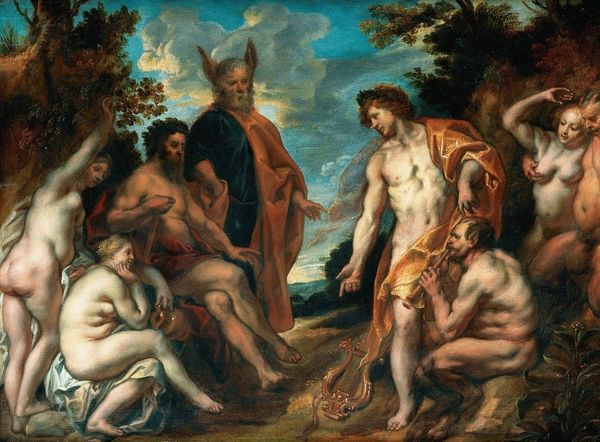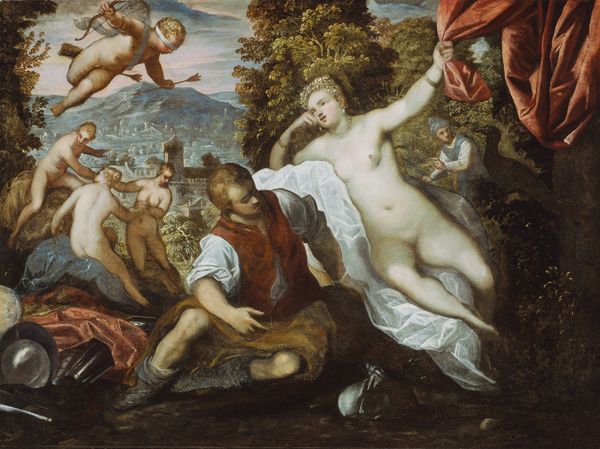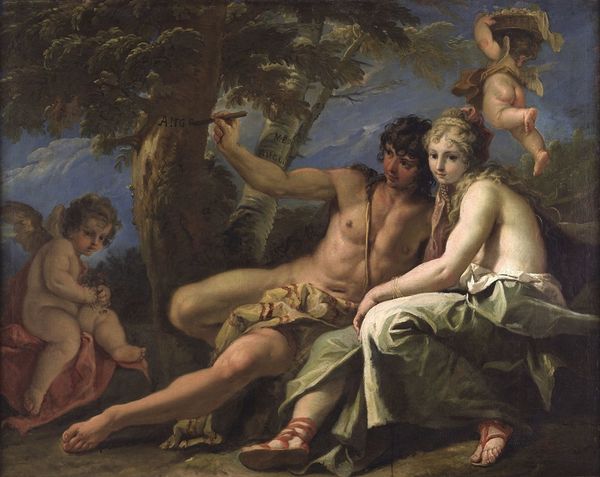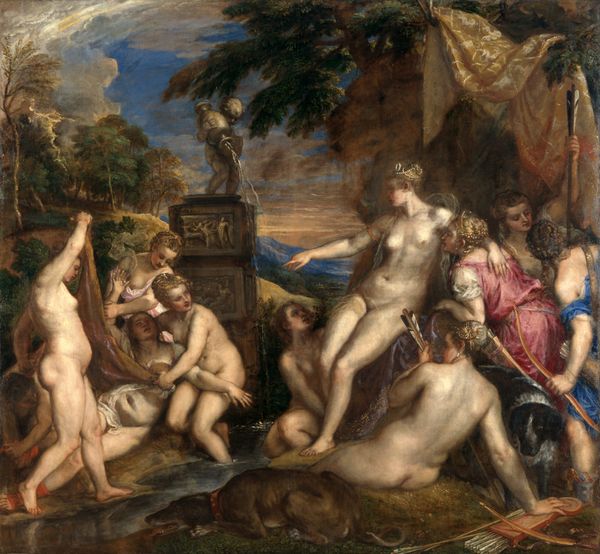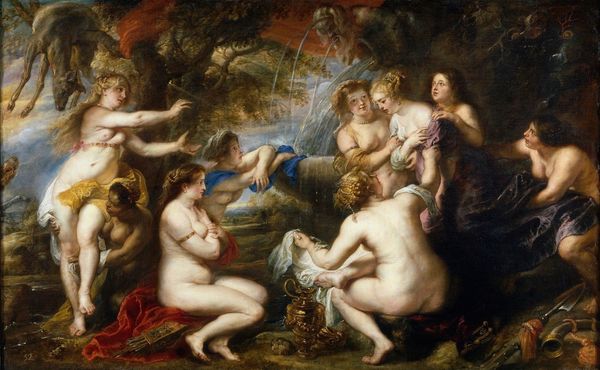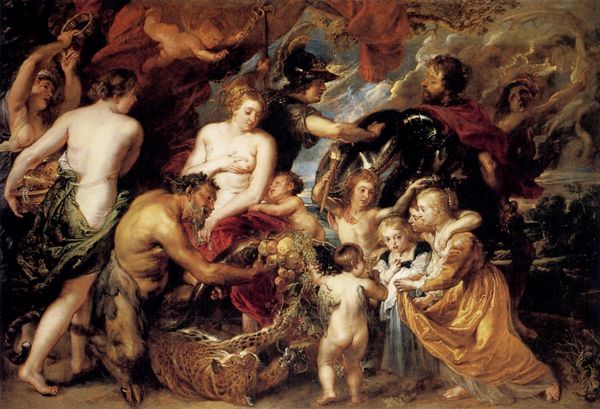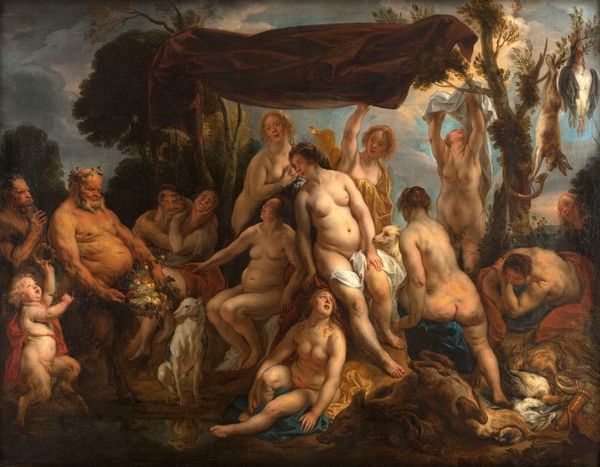
oil-paint
#
portrait
#
allegory
#
baroque
#
oil-paint
#
figuration
#
oil painting
#
mythology
#
history-painting
#
nude
Copyright: Public Domain: Artvee
Jacob Jordaens painted this allegory with oil on canvas, featuring figures from classical mythology. Here, Jordaens presents a vision of abundance and prosperity that reflects the social and economic concerns of his time in 17th-century Flanders. The figures, including Bacchus and Ceres, embody the fertility of the land, and would have been immediately familiar to a contemporary audience. But how might we understand the painting's role in shaping cultural values? Jordaens was working in a society that was still very concerned with social status, so his representation of mythological figures had real implications. An artwork like this affirms the importance of wealth and family, reflecting the values of the wealthy merchant class that was gaining power in the region. By studying archival records, we can better understand the social context in which this painting was made. Ultimately, the meaning of art is not fixed, but rather contingent on the cultural and institutional forces that shape its reception.
Comments
No comments
Be the first to comment and join the conversation on the ultimate creative platform.
